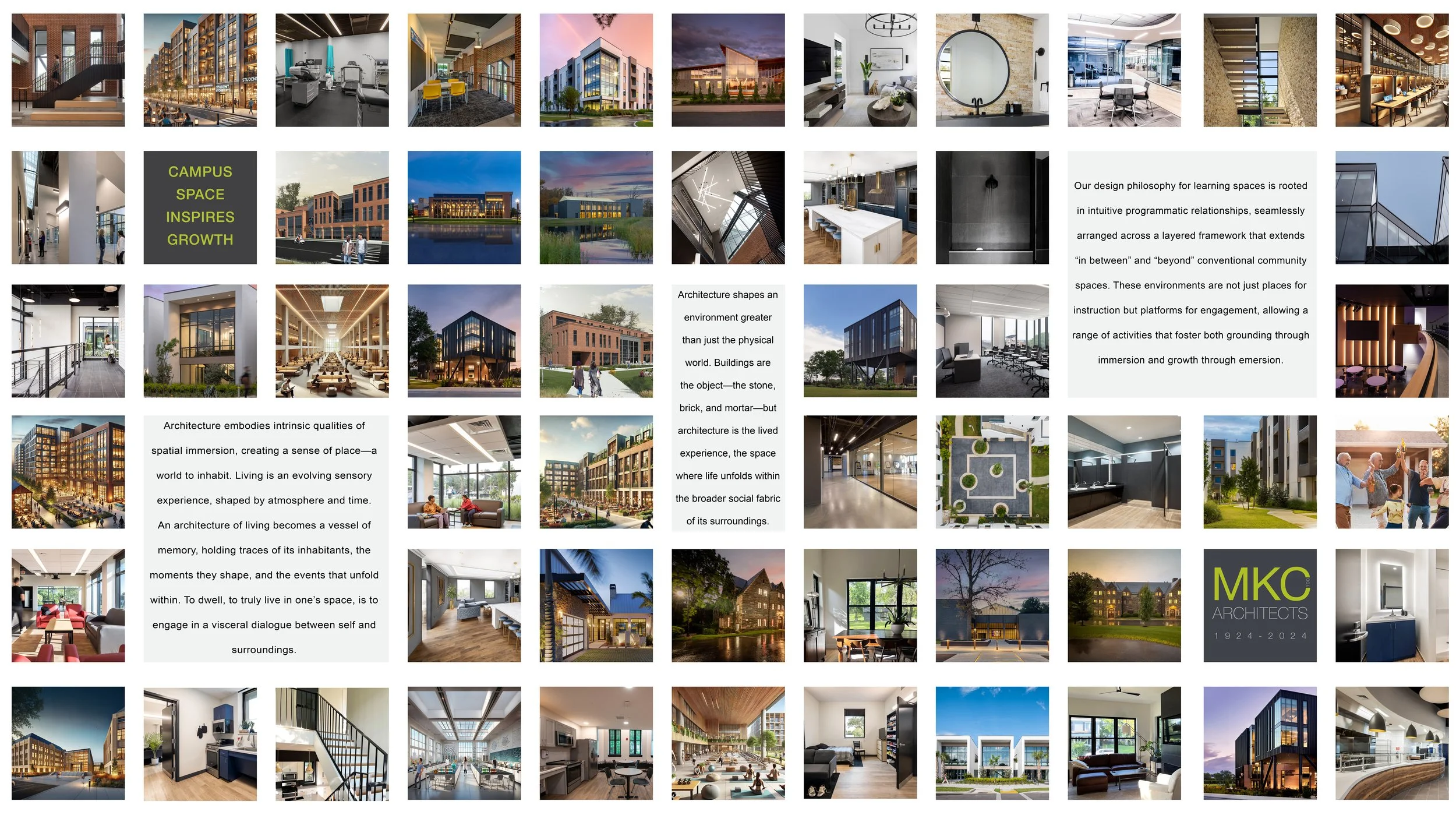Why Universities Are Investing in Modern Facilities and Mixed-Use Spaces
Higher education institutions are redefining student living by investing in state-of-the-art dormitories and mixed-use spaces that go beyond basic housing. Today’s students expect more than just a place to sleep—they seek an environment that enhances their academic, social, and personal growth. Universities and colleges are responding by creating vibrant, amenity-rich living spaces that support student success and well-being.
The Shift Towards Modern Student Housing
According to a 2022 Inside Higher Ed study, 66% of incoming students cited campus facilities—including student housing—as a factor in their decision. While large buildings with repetitive programs feel overwhelming or oppressive, residence halls have the potential to foster community enrichment, encouraging peer-to-peer interaction and lasting relationships beyond college.
Traditional dormitories with small, shared rooms and communal bathrooms are being replaced with modern, apartment-style residences that offer more privacy, comfort, and convenience. Features such as en-suite bathrooms, fully equipped kitchens, and high-speed internet connectivity are now common. The goal is to create an environment that feels like home while supporting academic excellence.
The Rise of Mixed-Use Student Spaces
Small colleges and universities in semi-rural areas must prioritize on-campus amenities to foster a supportive and engaging student living experience, directly impacting peer-to-peer relationships, retention rates, and academic success. With fewer off-campus resources than urban institutions, these schools rely on well-designed residential spaces, social hubs, and recreational facilities to create a sense of community, helping students build strong connections that enhance their college experience. Positive peer interactions contribute to emotional well-being, reducing feelings of isolation and increasing students’ commitment to their education. A well-supported residential life program encourages collaboration, study groups, and mentorship opportunities, reinforcing academic engagement and persistence through graduation. By investing in student-centered amenities, these institutions can significantly improve student satisfaction and long-term institutional success.
In a May 2022 Report on Loneliness, Resilience, and Mental Health, research found that 64.7% of college students reported feeling lonely, and 28.8% report severe psychological distress. As such, colleges are integrating retail, dining, and entertainment options into student housing developments, transforming campuses into dynamic, 24/7 communities. Mixed-use spaces include fitness centers, co-working areas, cafés, and even entertainment venues like bowling alleys and gaming lounges. These amenities enhance the student experience by fostering social interaction, reducing stress, and creating a sense of belonging.
Key Benefits of Modern Student Dorms and Mixed-Use Spaces
Enhancing Student Well-Being – Access to fitness centers, wellness programs, and recreational spaces promotes a healthy lifestyle, helping students balance academics and personal well-being.
Fostering a Sense of Community – Mixed-use developments encourage collaboration, networking, and social interaction, which can improve mental health and overall student satisfaction.
Generating Additional Revenue – Retail and commercial spaces within student housing developments create additional income streams for universities, helping to offset operational costs.
Supporting Academic Success – Quiet study lounges, tech-integrated learning spaces, and co-working hubs provide students with environments conducive to focused study and collaboration.
Boosting Campus Attractiveness – High-quality housing options give universities a competitive edge in attracting and retaining students, particularly in an era where campus life plays a major role in college selection.
The Future of Student Living
As student needs evolve, universities will continue investing in cutting-edge housing solutions that prioritize comfort, sustainability, and connectivity. Smart dorms with app-controlled lighting and climate, AI-powered security systems, and eco-friendly designs will become the new standard. The goal is to create living spaces that not only meet students’ expectations but also contribute to their long-term success.
For more information on learning spaces, see our Academic Portfolio.
For more information on student housing facilities, see our Living Portfolio.



